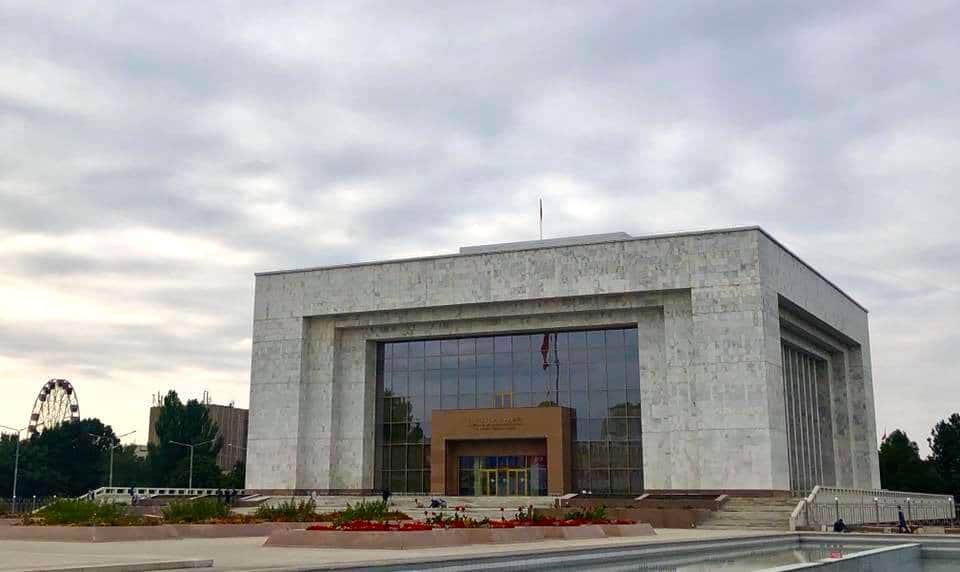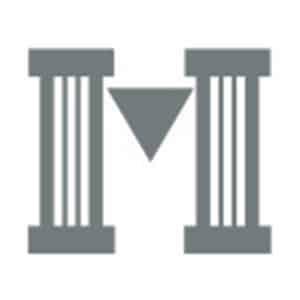The Kyrgyz were largely a nomadic civilization up until the 20th century. The city of Bishkek has a number of museums documenting this fascinating history as well as the development of the arts and sciences in Kyrgyzstan. These museums were mostly established during (and today are often unchanged from) Soviet times, including a number of house museums celebrating the lives and works of a number of local writers, composers, and artists.
Kyrgyzstan’s museums are also cheap; entrance fees generally average about a dollar. In addition, Bishkek offers a yearly “Night at the Museum,” usually in mid-May, when museums stay open late and offer masterclasses, lectures, and special exhibitions.
History Museums
The Kyrgyz are ancient nomads. Raising livestock in the vast Eurasian steppes and mountains their history covers many cultural, social, and political transformations. Their ancestors founded the great Yenisei Kyrgyz Khanate, served as warriors in the Mongol Empire, were subjects of the Timurid Empire, Khanate of Kokand, Russian Empire, and the USSR. Today they are once again independent and their museums reflect both their storied history and their modern nation building efforts.
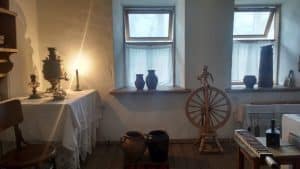
The Mikhail Frunze Museum
Frunze Street, 364 – Frunze’s former home, a modest thatched cottage, is engulfed by a two-storey museum, propaganda, and military weaponry. Mikhail Frunze was a native of Bishkek and Soviet general, and is credited with whipping the town into submission during the Russian Civil War. He’s understandably not Kyrgyzstan’s favorite son and the fact that this well-kept museum and the large statue of him gallantly on horseback near the railway station still stand is interesting in and of itself.
Archaeological Museum
Chuy Prospect, 265a – This museum is located in and run by the Academy of Science, housing archeological artifacts and discoveries up to 100,000 years old. All exhibits and historical artifacts are collections of scientific researchers of the Academy found throughout the country.
Ishak Razzakov Memorial Museum
Chuikov, 90 – The house-museum of the former First Secretary General of the Central committee during Soviet rule exhibits his book, Soviet memorabilia, Soviet awards, clothing, and his personal living quarters.
The National Historical Museum of the Kyrgyz Republic
Ala-Too Square, Chuy Prospect – See the archaeological and ethnic history of Kyrgyzstan. Most artifacts have English-language descriptions. The three-story museum displays the natural and political heritage of the country, ethnographic displays of the 19th and 20th century, and various forms of national artisanry.
Art Museums in Bishkek
From a rich history of traditional crafts to Soviet realist art to modern art being produced today, Bishkek has much to offer art enthusiasts!
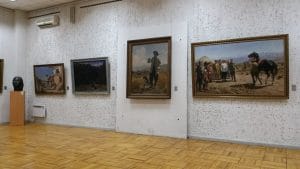
National Museum of the Fine Arts
Sovetskaya, 196 – This is the main art museum of the city. It houses a massive collection that mainly focuses on traditional Kyrgyz art, such as intricate felt carpets (shyrdaks) and nomadic clothing and jewelry. An additional major focus is Soviet-era works that represent the birth of European-style painting in Kyrgyzstan and extensively documents life in the Kyrgyz SSR. More modern artists are also on display.
Olga Manuilova Memorial House Museum
Tynystanov, 108 – This cozy house museum is dedicated to the work of Olga Manuylova, a Soviet sculptor from Russia who moved to Kirghizia in 1920. The museum also has special exhibits, featuring both Soviet artists, and contemporary painters and sculptors.
Semyon Chuikov Memorial House Museum
Chuikova, 87a – See the works of Soviet painter Semen Chuykov and his wife Eugenia Maleina. The museum is not well advertised on the street, but is accessible by foot from Sovetskaya street, walking toward the railway. You need to pass Turkish Air office and a hairdresser, turn right and it will be on your right.
Tinibek Sadykov Memorial Museum
Togolok Moldo, 50 – This smaller, lesser known museum houses the sculptures of Tinibek Sadykov. You may see Sadykov’s larger works on the corner of Chuy and Sovetskaya, Victory Square, and in the Philharmonic.
Open Monday-Friday 9am-12pm [lunch break] 1pm-4pm.
Gaspar Aitiev Memorial Studio Museum
Corner of Tynystanova and Chokomorova – Gaspar Aitiev’s studio now functions as a museum which permanently displays some of the work of painter and sculptor. The collection consists of landscapes and sketches in a range of different mediums. The museum is said to be run by the son of the artists himself and a wonderful experience for those interested in national Kyrgyz artists. This is no signage, so visitors may have to look around to find the museum itself.
Literature and Music Museums
Kyrgyzstan’s literary heritage is deeply rooted in its oral traditions, especially the epic poem Manas, one of the world’s longest epics, which reflects the history, values, and struggles of the Kyrgyz people. Witten literature and novels were first produced in Kyrgyz by Kyrgyz authors under the Soviets. However, these early authors such as Chingiz Aitmatov, Kasym Tynystanov, and Aaly Tokombaev gained quick followings and are held up as true representatives of Kyrgyz tradition.
Chingiz Aitmatov House Museum
Aitmatova, 305 – Aitmatov is one of Kyrgyzstan’s greatest modern heroes. A novelist, diplomat, and strong advocate for Kyrgyz culture and sovereignty, his former home now offers six rooms showing his furniture, clothing, books, medals, awards, personal photographs, and handwritten letters.
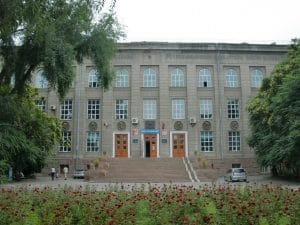
The National Library of Kyrgyzstan
Sovetskaya, 208 – The library boasts an impressive collection of over 6 million items, including rare manuscripts, ancient books, and periodicals that span the country’s rich history and diverse cultures. Its focus is on Kyrgyzstan’s literary heritage, offering insights into everything from epic poetry like the Manas to Soviet-era publications and contemporary Kyrgyz literature. There is also a small museum and a center offering books in multiple languages.
Murataaky Kurenkeev Museum
Panfilov, 162 – Located inside of the Kyrgyz State Music College, this museum is dedicated to the life and work of folk composer, musician, and college namesake, Murataaky Kurenkeev.
Aaly Tokombaev Memorial Museum
Chuikova, 109 – Tokombaev’s former house has been turned into museum to honor the Kyrgyz poet and composer’s life and work. One of his main accomplishments is helping standardize the written Kyrgyz language.
Toktugul Satylganov Literary Museum
Toktogul Street, 109 – This is a museum memorializing the literary history of Kyrgyzstan, Turkic writing, oral story-telling, and the most famous bard of the country, Toktogul Satylganov.
Science Museums
Science museums in Bishkek focus mostly on Kyrgyzstan’s breathtaking nature and geology.
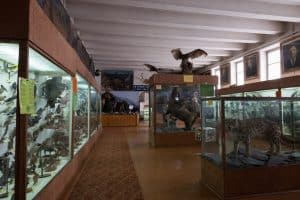
Zoological Museum
Chuy Prospect, 265 – Kyrgyzstan offers one of Central Asia’s densest concentrations of biodiversity. Despite Kyrgyzstan occupying a mere 0.1% of Earth’s total land area, it hosts 3% of the world’s animal species. This small museum is run by the national Academy of Sciences that celebrates and displays the various flora and fauna of Kyrgyzstan. It also hosts some quirky exhibits such as several displays showing taxidermied animals posed to represent Asop’s fables.
Geological and Mineralogical Museum of Mining
Chuy Prospect, 164 – See geological displays of minerals, subsoils, and a collection of gold specimens found in Kyrgyzstan. This museum and geological training ground for academics contains fossilized trees, wood, dinosaur remains, ancient pieces of volcanic rock and other geological deposits and minerals.
Monument Complexes
Bishkek offers several monument complexes, with many sculptures displayed in outdoor settings around a central theme.
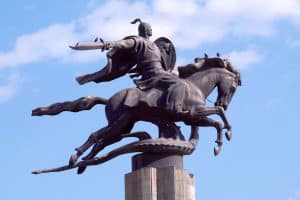
The Manas Statuary Complex
Outside the Philharmonia at Chui, 210
See the Kyrgyz national hero in a pose that strikingly resembles the Moscow logo of St. George, no doubt to show that similarities between between Kyrgyz and Russian cultures existed in the Soviet imagination. Manas is shown slaying a dragon (he is also guarded by one in the legends about him). His wife, Kanykei, is to his right in the traditional Kyrgyz dress of married women that can still occasionally be seen on the streets of Bishkek. Kanykei was his confidant and trusted adviser, part of a small but prominent tradition of strong women in ancient Kyrgyz history. Also featured are several statues of famous manashchi, the traditional bards that handed down the Manas legend from generation to generation. They are positioned as they would have sat in a yurt and recited their poetic tales. Although the tradition is now reviving, the Soviets broke this traditional chain by censoring and officially discouraging traditional forms of the tale as too “nationalist” for the USSR. Of those depicted, Sayakbay is known as the greatest bard.
Alley of Heroes and Monument to the Young Guard
Lines the park that divides Molodaya Gvardiya Street – These busts of heroes and statues of soldiers declare on repeated plaques: “We went to war for Communism!” The memorial was built by the Komsomol in the 1960s.
Oak Park and Open Air Sculpture Museum
Across from Ala Too Square – Flanked by the Fine Arts Museum, Frunze Museum, and State History Museum, this park is named for the century-old oak trees inside. Inside, you’ll find a trail with busts former of former Kyrgyz political figures. The Red Guards’ Memorial is also here: a giant red obelisk marking the common grave of Bolsheviks who died in the 1918 counter-revolution. Yakov Nikoforovich Logvinenko, credited with defeating that counter-revolution, is also buried here (he died several years later). He still has a street named after him just a couple of blocks from the park, on the other side of Ala Too. Lastly, there is also a very congenial monument of Marx chatting with Engels, probably about the Monument to the Glory of Labor (also featured here).
Victory Square
Corner of Frunze and Ibraimov Streets – The square boasts two major monuments. The first is “Manas 1000,” a giant concrete yurt (traditional Kyrgyz housing) which was built to honor the 1000th birthday of the legendary Kyrgyz hero, Manas. The date also handily coincided with the 40th anniversary of the end of WWII. The other monument, an eternal flame with a female statue who eternally mourns her fallen soldier husband and son, solemnly remembers the end of that bloody war.
Rural Museum Complexes
There are also many museums outside of Bishkek that deserve to be on your radar.
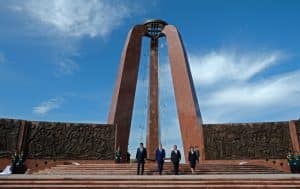
Ata-Beyit Memorial Complex in Chong-Tash
0.5 hours from Bishkek – Just outside Bishkek, about a half hour drive from the city center, is the burial place of 137 people. Some of these were founders of the original Kyrgyz Soviet state who had then fallen from favor and were shot in the purges. Today, a memorial complex built at the gravesite honors all victims of the Stalinist repressions. There, the Museum of Ata Beiit (which means “The Cemetery of Fathers” in Krygyz)houses personal belongings of those killed, archive documents, and a memorial plaque along the right side of the museum listing the victims of the repressions from 1937-1938. Also buried at Ata Beiit are some of the 86 victims of the April 2010 uprising against former President Bakiev.
Burana Tower
1.5 hours from Bishkek – Visit a ghost town in the Chuy Valley in northern Kyrgyzstan. The Burana Tower, along with grave markers, some earthworks and the remnants of a castle and three mausoleums, is all that remains of the ancient city of Balasagun, which was established by the Karakhanids at the end of the tenth century. The Burana Tower is a large minaret (an architectural feature of Islamic mosques) located 80 km east of Bishkek. An external staircase and steep, winding stairway inside the tower enables visitors to climb to the top. The entire site now functions as a museum and there is a small museum building containing historical information as well as artifacts.
Manas Ordo
5 hours from Bishkek, Talas Region – Manas Ordo park is about five hours from Bishkek through steep mountain passes. It is built around a mausoleum that may have been erected around 1334 and is thought to be the final resting place of the Kyrgyz national hero Manas, the epic hero who united the Kyrgyz people from 12 tribes. The epic poem Manas tells the story of his life in volumes twenty times longer than the Iliad and Odyssey combined. It is considered to be the most treasured expression of the national heritage of the Kyrgyz people. The site includes a horse track, a museum, a rose garden surrounded by 40 statues of Manas’ soldiers, an offerings site, and a yurt where fortunes can be told. The complex was built in 1995 for the 1000 Years of Manas celebration, the first – and to date the largest – national celebration that has taken place in Kyrgyzstan since its independence.
You’ll Also Love
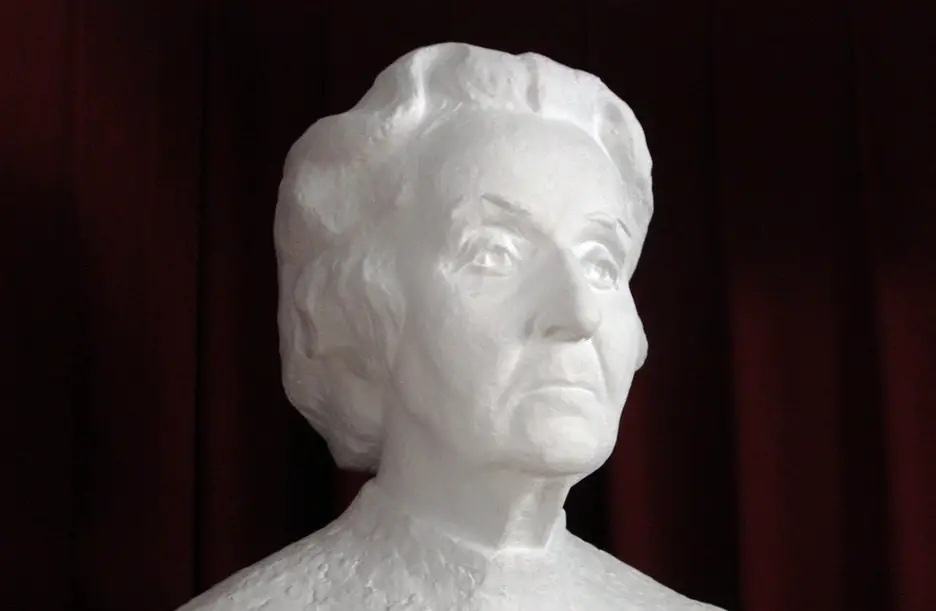
Memorial House Museum of O.M. Manuilova in Bishkek, Kyrgyzstan
Tucked between modern towers and Soviet monuments of Bishkek’s downtown area stands a small, gated house. A plaque outside humbly identifies it as the Memorial House Museum of O.M. Manuilova. Olga Maksimilianovna Manuilova was born in Nizhny Novgorod, Russia in 1893 and educated as a sculptor in Moscow. The daughter of a military doctor, her […]
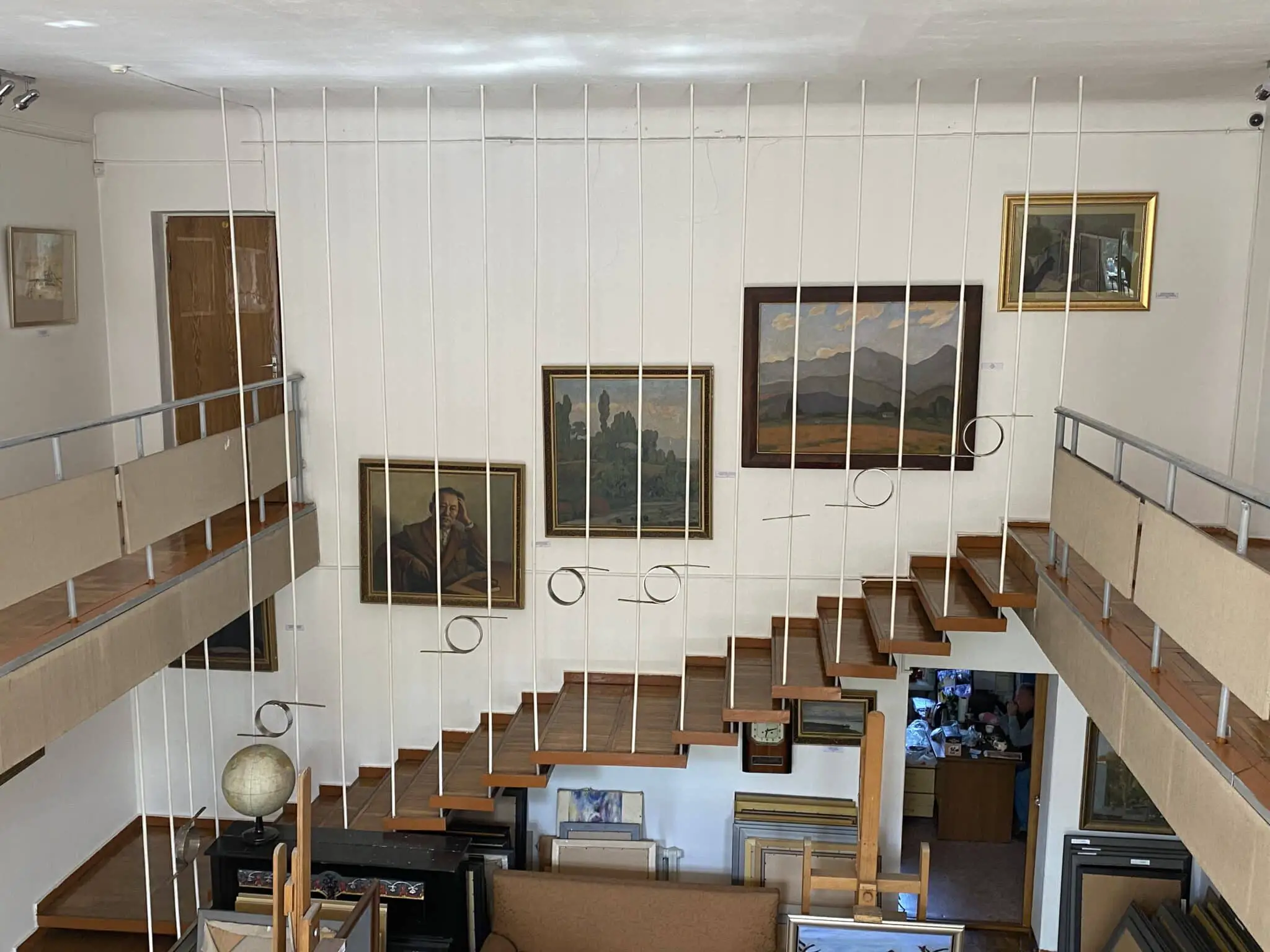
Gapar Aitiev Memorial Studio Museum in Bishkek
The Gapar Aitiev Memorial Museum Studio is housed in the small, two story space which were once his working studios. Aitiev, who was born in 1912, was a school teacher before becoming one of the first classically trained ethnic Kyrgyz artists. Today, he is known for his sensitive and loving introduction of Krygyz faces, traditions, […]
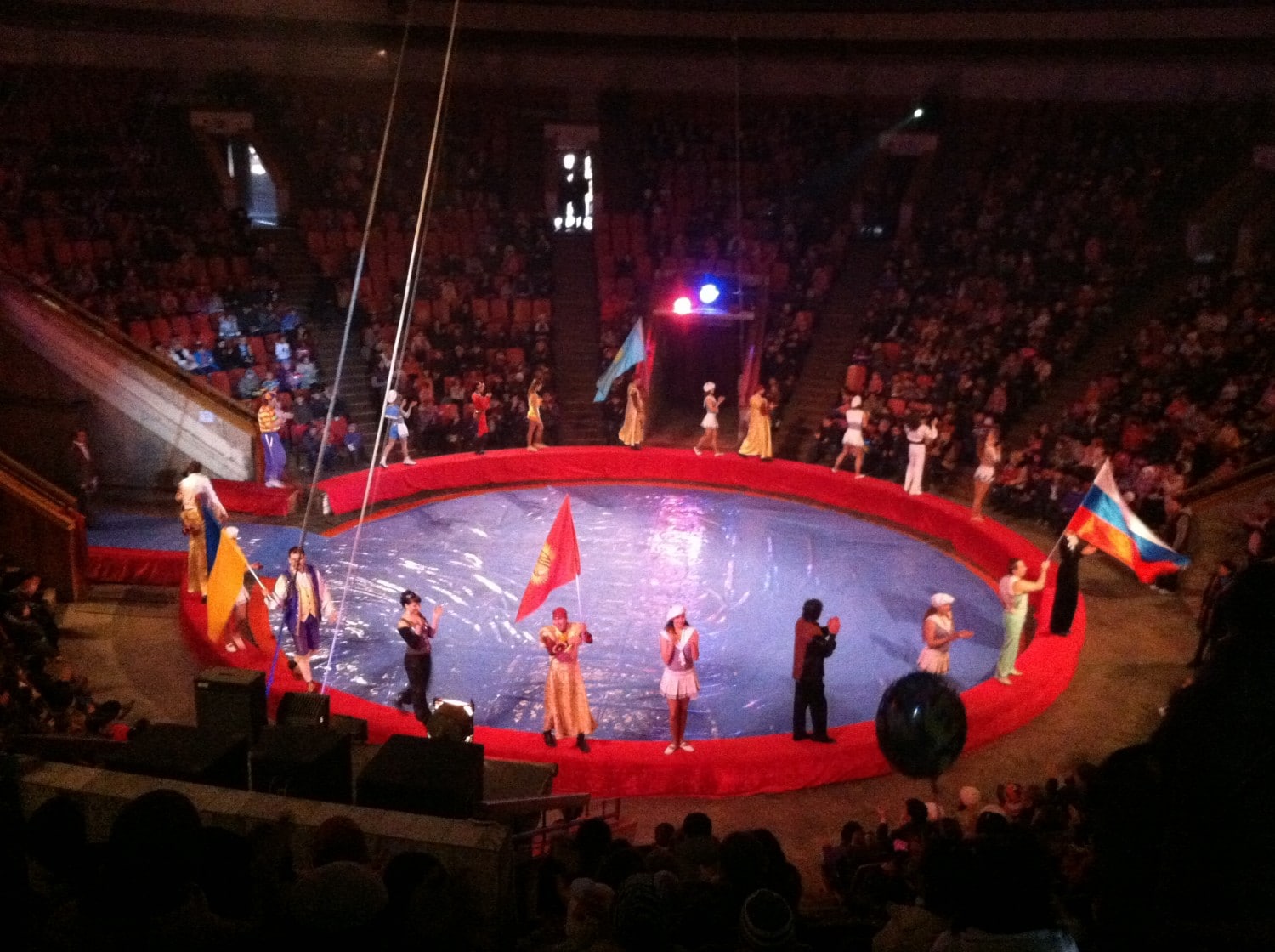
Circus in Bishkek
“Moscow Oceanarium” / Московский Океариум January 26-February 17, 2013 Saturday and Sundays, 12:00pm and 4:00pm Price: 500 som – 700 som http://circus.312.kg/ On Sunday afternoon, my London School colleagues and I caught the last day showing of the circus that has been in town the past month, the “Moscow Oceanarium.” I have been looking forward […]
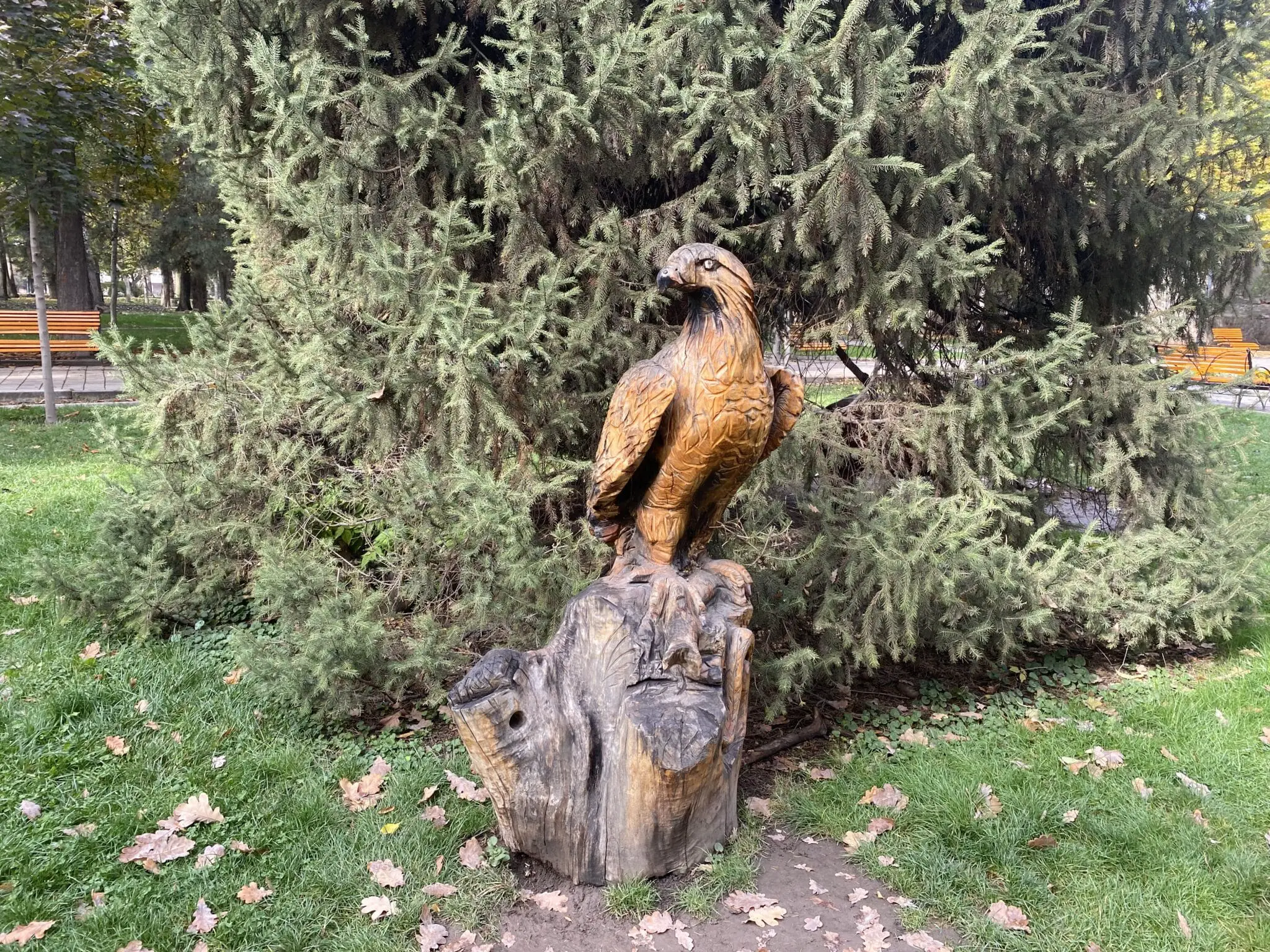
Oak Park and the Open Air Sculpture Museum in Bishkek
The Open Air Sculpture Museum consists of 90 unique sculptures all lining the green and leafy pathways of Oak Park in central Bishkek, Kyrgyzstan. The sculpture garden was established in 1984 as part of the All Union Sculptors Symposium that took place in Bishkek at that time. The symposium was held under the theme of […]
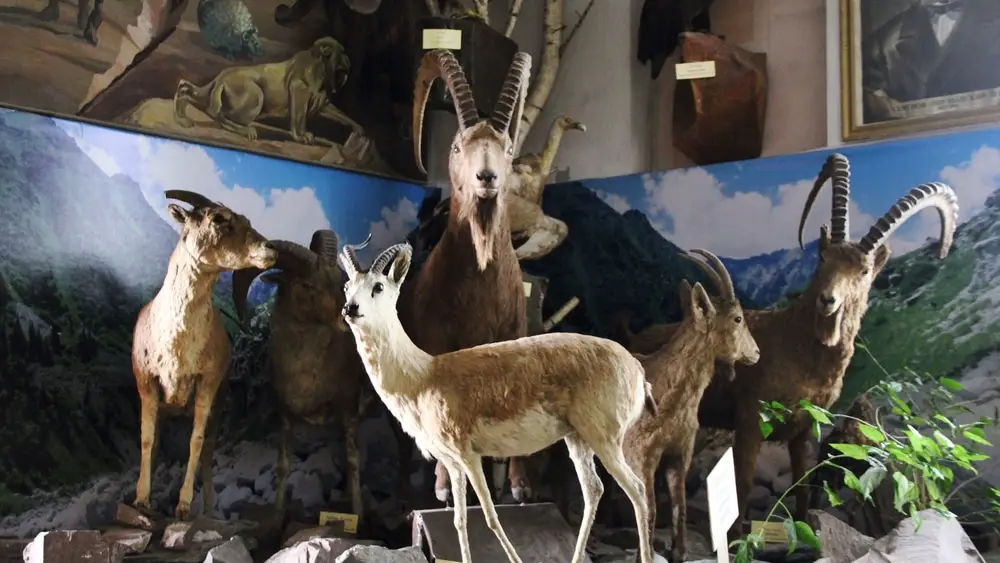
The Zoological Museum of the Biology and Soil Institute in Bishkek
Bishkek is rich in some of the most unusual museums I have ever witnessed. Topping my personal list is the Zoological Museum of the Biology and Soil Institute, a tiny gem located along one of the city’s major thoroughfares, Chuy Avenue. The first iteration of the zoological museum opened in 1946 on Ala-Too Square. However, […]


